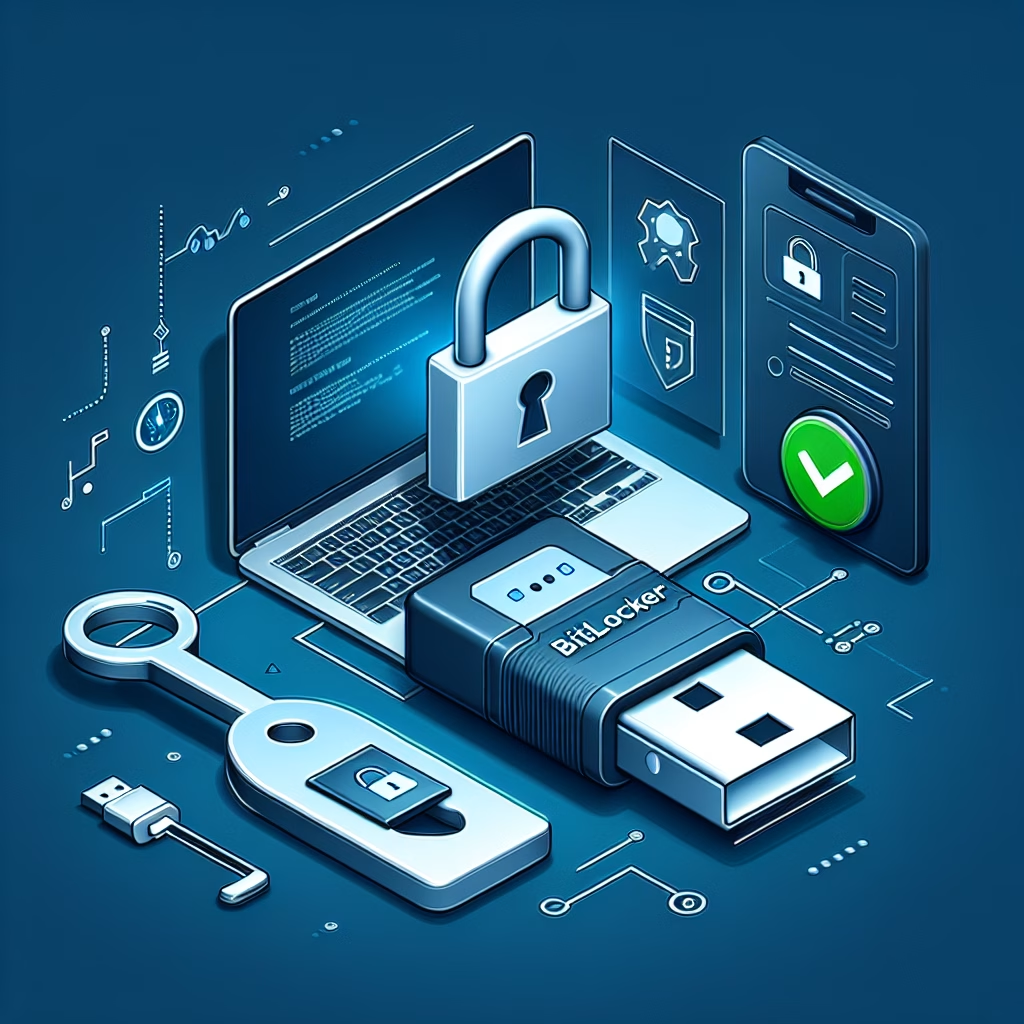How to Decrypt a USB Drive Protected with BitLocker: A Technical Guide
Summary
This article provides a detailed technical guide on decrypting USB drives protected with BitLocker, Microsoft’s native encryption tool. It covers the core functionality, common issues, and step-by-step implementation, emphasizing security best practices. Key topics include system prerequisites, troubleshooting, and preventive measures to ensure data integrity during decryption.
Introduction
Decrypting a USB drive protected with BitLocker involves disabling the encryption while preserving data integrity. BitLocker, integrated into Windows Pro and Enterprise editions, uses AES encryption to secure removable media. Proper decryption is critical for data accessibility, especially in enterprise environments where encrypted drives are standard. This process requires administrative privileges and adherence to security protocols to mitigate risks during and after decryption.
What is Decrypting a USB Drive Protected with BitLocker?
BitLocker Drive Encryption is a Windows feature that employs AES (128-bit or 256-bit) encryption to protect data on fixed and removable drives. Decrypting a USB drive reverses this process, rendering the data readable without cryptographic keys. This is typically done when the drive no longer requires encryption or needs to be repurposed. Decryption is managed via Windows PowerShell, Command Prompt, or the BitLocker GUI, requiring either the password, recovery key, or smart card credentials used during encryption.
How It Works
BitLocker decryption involves:
- Authentication: The user provides the correct password, PIN, or recovery key to unlock the drive.
- Key Retrieval: The Full Volume Encryption Key (FVEK) is extracted from the drive’s metadata using the provided credentials.
- Data Decryption: The FVEK decrypts sectors sequentially, reverting the drive to an unencrypted state. This process is CPU-intensive and may take hours for large drives.
- Metadata Removal: BitLocker-specific structures (e.g., $BitLocker partition) are deleted post-decryption.
Hardware interactions depend on system configuration:
- TPM (Trusted Platform Module): Not typically used for USB decryption, as removable media rely on user-supplied credentials.
- UEFI/GPOs: Group Policies can enforce encryption but do not impede decryption if the user has administrative rights.
Common Issues and Fixes
Issue 1: “Access Denied” Error During Decryption
Cause: Insufficient permissions or corrupted BitLocker metadata.
Fix: Run decryption as Administrator. If metadata is corrupt, use repair-bde in PowerShell with the recovery key.
Issue 2: Decryption Stalls or Fails Mid-Process
Cause: System interruptions (e.g., power loss) or disk errors.
Fix: Run chkdsk /f to repair the drive, then restart decryption. Use a stable power source for laptops.
Issue 3: “Recovery Key Required” Unexpectedly
Cause: Drive auto-lock triggered by Group Policy or manual suspension.
Fix: Input the 48-digit recovery key or re-enable BitLocker via manage-bde -protectors -enable X:.
Best Practices
- Backup First: Ensure data is backed up before decryption to prevent loss from interruptions.
- Verify Credentials: Confirm the password or recovery key is accessible to avoid lockout.
- Monitor System Resources: Decryption is I/O-heavy; avoid concurrent disk-intensive tasks.
- Audit Logs: Check Event Viewer (
Applications and Services Logs > Microsoft > Windows > BitLocker-API) for errors. - Re-encrypt When Necessary: Use
manage-bde -on X:to re-encrypt if the drive still handles sensitive data.
Conclusion
Decrypting a BitLocker-protected USB drive is a reversible process that demands careful execution to avoid data loss. Administrators must balance accessibility with security by following best practices for authentication, error handling, and system monitoring. As encryption remains a cornerstone of data protection, understanding BitLocker’s decryption mechanics ensures compliance and operational flexibility in Windows environments.
People Also Ask About
Can I decrypt a BitLocker USB drive without the password?
No. Decryption requires either the original password, smart card, or a 48-digit recovery key. Microsoft does not provide backdoor access. Brute-force attempts are infeasible due to AES encryption strength.
Does decryption erase data on the USB drive?
No. Decryption converts encrypted data back to plaintext without deletion. However, interruptions (e.g., unplugging the drive) may corrupt files.
Is BitLocker decryption faster on SSDs?
Yes. SSDs decrypt quicker than HDDs due to faster read/write speeds. Expect ~5 GB/min on NVMe SSDs versus ~1 GB/min on HDDs.
Can I pause and resume BitLocker decryption?
No. Once initiated, decryption cannot be paused. Interruptions force a restart of the process.
Why does decryption fail on older Windows versions?
BitLocker requires Windows 10 Pro/Enterprise or Windows 11. Older versions (e.g., Windows 7) lack native decryption support; use third-party tools like dislocker on Linux.
Other Resources
- Microsoft’s BitLocker Documentation: Official guidelines on managing encryption/decryption.
- BitLocker Supplicant Analysis: Explains low-level decryption processes.
Suggested Protections
- Store Recovery Keys Securely: Use Azure AD or print them to a password manager.
- Prevent Unauthorized Suspension: Configure GPOs to restrict BitLocker suspension rights.
- Encrypt Only Necessary Drives: Avoid unnecessary encryption to reduce decryption overhead.
- Use Hardware Encryption: Opt for drives with AES-native controllers (e.g., Microsoft’s “BitLocker To Go”).
- Audit Decryption Events: Enable “Audit Removable Storage” in Group Policy.
Expert Opinion
BitLocker’s decryption process, while straightforward, introduces risks if mishandled. Enterprises should mandate pre-decryption backups and enforce multi-factor authentication for access to recovery keys. The rise of ransomware has made reversible encryption-critical—decrypt only in secure environments to prevent interception. Future Windows updates may integrate cloud-based key retrieval to streamline recovery.
Related Key Terms
- BitLocker USB decryption Windows 10
- How to remove BitLocker encryption from external drive
- Fix BitLocker decryption failed error 0x80070017
- BitLocker recovery key not working on USB
- Decrypt BitLocker drive using manage-bde command
- BitLocker To Go decryption best practices
- USB drive stuck in BitLocker decryption mode
#Decrypt #USB #Drive #Protected #BitLocker #StepbyStep #Guide
Featured image generated by Dall-E 3





